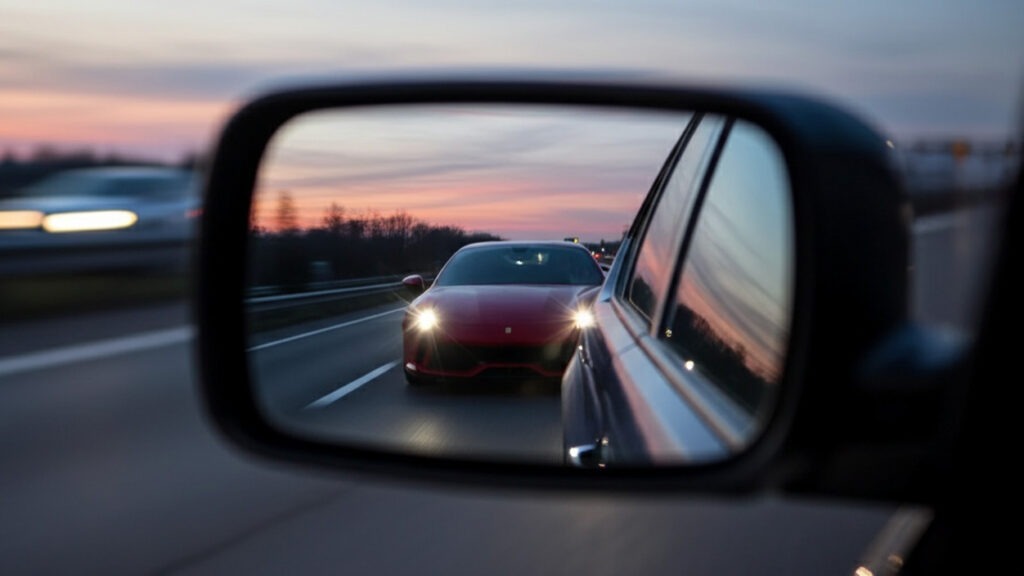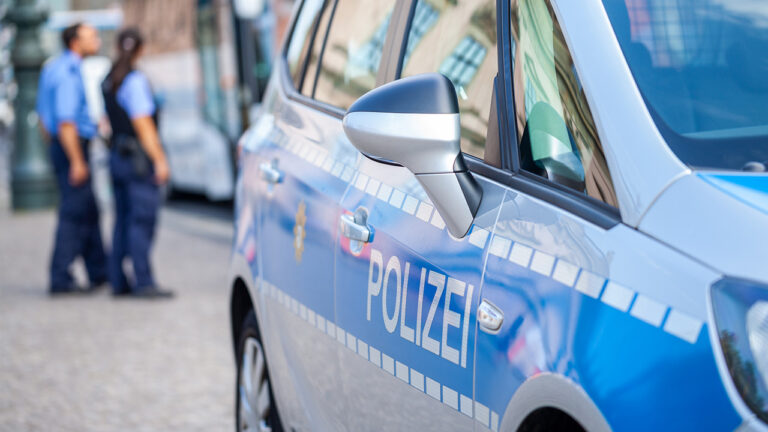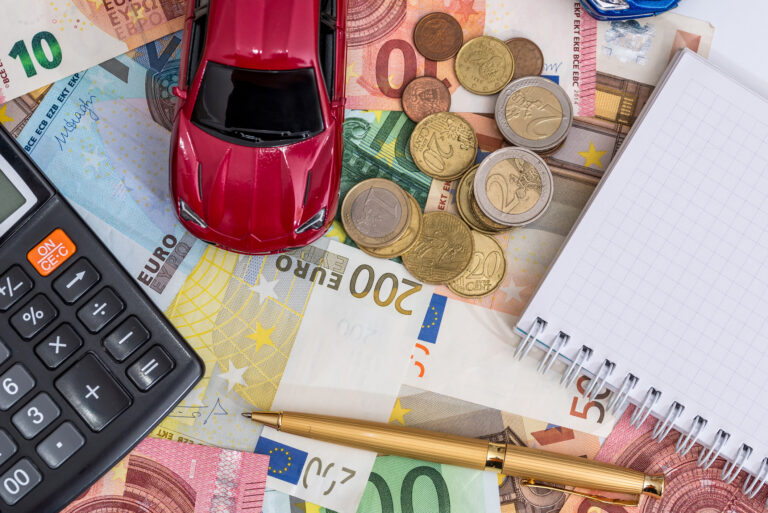Jostling, tailgating, abrupt braking or deliberately slowing down - many drivers are familiar with such dangerous situations. But what many don't realise: Certain types of behaviour in road traffic can not only be rude or inconsiderate, but can also be considered coercion under criminal law. The legal consequences are correspondingly serious: fines, a driving ban or even imprisonment are possible - depending on the severity of the offence.
In this guide, we explain what constitutes coercion in road traffic, what the penalties are and how to behave correctly as a victim - including illustrative examples and tips on how to report the offence.
- Coercion is regulated in Section 240 of the German Criminal Code and constitutes a criminal offence.
- Coercion in road traffic can be caused by a serious offence or by violence. However, each case must be assessed individually.
- The penalty for coercion in road traffic is either a prison sentence of up to three years or a fine of 20 to 40 daily rates. In addition, you may be disqualified from driving and receive 3 points in Flensburg, as well as a driving ban of up to three months and a ban on applying for a new driving licence.
What is coercion in road traffic?
As "coercion in road traffic" does not exist explicitly as a separate paragraph, lawyers refer to Section 240 of the German Criminal Code (StGB).
According to Section 240 of the German Criminal Code (StGB), coercion occurs when a person is forced to commit or refrain from committing an act by means of violence or the threat of violence.
In road traffic, coercion can be committed, for example, by tailgating. This is the case if the other driver is put under so much pressure that they fear for their life and limb and are forced to change lanes against their will. The driver who is tailgating must also have the intention to coerce the other driver.
When does behaviour that is contrary to traffic regulations become coercion in road traffic?
But be careful! Not all unlawful behaviour is the same as coercion. So what are examples of coercion in road traffic?
In order to clearly distinguish coercion from other illegal behaviour, it is particularly important that the Travelling speedthe Distance to the next vehiclewhich Length of the carriageway section and the Duration of the coercive behaviour be included.
A distinction must be made between coercion and InsultFor example, simply showing a stinky finger is not yet coercion, but it is certainly an insult.
For example, if a driver overtakes using the Headlight flasher If a driver draws attention to himself, he does not immediately coerce the driver in front. The reason for this is that coercion in road traffic requires wilful obstruction. The short flash of the headlights before overtaking on roads outside built-up areas is even permitted as a warning function under the German Road Traffic Act (Section 5 (5) StVO)!
However, this behaviour can become coercion if the driver drives ever closer and at the same time constantly flashes his headlights so that the lane is "finally" cleared and the driver in front feels compelled to take evasive action. It therefore depends very much on the exact circumstances of the case as to whether it is a case of coercion in road traffic.
Generally speaking, coercion can be divided into two groups: coercion by force and coercion by means of a serious offence.
Coercion in road traffic through a serious offence
This form of coercion is fulfilled if the perpetrator threatens the victim with a situation over the course of which he claims to have influence. An example: The driver behind you threatens to "push" you if you do not immediately drive through the red light and clear the way. He influences your will to wait until the next green phase, so that you would probably accelerate immediately out of fear.
It is irrelevant whether the vehicle behind you is actually so powerful that it could "push" your vehicle. Of course, it is important to look at each individual case, as it is often difficult to make a general classification of the behaviour in question afterwards.
Coercion in road traffic through violence
This is the case when the offender exerts psychological or physical force on his victim in road traffic in order to force certain behaviour.
An example of psychological violence: a group of pedestrians stand on the carriageway to prevent drivers from continuing their journey.
Further examples of coercion in road traffic
- Obstructing when overtaking by persistently driving on the left-hand side of the carriageway despite the right-hand lane being free or braking abruptly
- Following too closely and tailgating at high speed or deliberately driving slowly and suddenly swerving out of the lane
- Braking for no reason or a sudden lane change
- Deliberate slowing down
If you feel coerced by other road users, or if one of the previous examples applies to your situation, then you should file a complaint.
Charges of coercion in road traffic - 3 important steps
If you feel coerced by other road users, or if one of the previous examples applies to your situation, then you should file a complaint.
Note: You do not need a witness as you do not benefit directly from the report. As the person making the report, you will generally be believed because you have gone to the trouble of reporting the incident.
How can I file a complaint for coercion in road traffic?
- Does it make sense to report it?
This decision is up to you. We think that there is no harm in trying (even if you are not 100 per cent sure). The officers can also simply reject your complaint if there was no coercion. Coercion in road traffic is a request offence. This means that the officers will only investigate your case if they have filed a complaint.
- Note the licence plate number
Make sure you remember the licence plate number, vehicle type, make and colour. Ideally, you will also have memorised the driver's appearance. Make a note of all the information according to the 4-W scheme: WHAT happened WHEN, WHERE and with WHOM?
- Press charges
You can now record all this information when you make your report. You can do this by telephone or in person at the police station or online police station in your respective federal state.
What happens after the report? After the report has been made, the police will try to find the perpetrator. The offender must then make a written statement. If there is a trial, you must appear as a witness.
What is the penalty for coercion in road traffic?
In the case of coercion in road traffic, the offender faces a prison sentence of up to three years or a fine of 20 to 40 daily rates. One daily rate corresponds to one day's salary, i.e. one thirtieth of the monthly net salary. In addition, the driving licence may be revoked and three points may be awarded in Flensburg, as well as a driving ban of up to three months and a ban on applying for a new driving licence. However, if it is only an administrative offence and not a case of coercion, the offender "only" has to pay a fine.
If your statement stands against the statement of the defendant and there are no witnesses, the judge will decide at his discretion. At this point at the latest, it is advisable to consult a lawyer, as they are familiar with comparable cases and can make a targeted argument in court. We will be happy to help you with this.
Accident victims like you get the best support from fairforce.one.
Have your accident reported now free of charge and without obligation by our regulation specialists.
Steps towards fair claims settlement
Call us now free of charge at 0800 - 30 111 60 or have your claims checked directly online!
At fairforce.one, we give you the assurance that your matter will be examined and competently resolved for you exclusively by proven, customer-orientated traffic and insurance law specialists.
Contact us with just a few clicks and we will help you further. The fairforce.one network will enforce your claims and support you personally in all matters right through to full payment.
This is exactly why we founded fairforce.one. And that's exactly what has made us Germany's road accident settlement portal with the best customer ratings.
Frequently asked questions about coercion in road traffic
When is behaviour considered to be coercion in road traffic?
Behaviour is considered to be coercive if another road user is deliberately forced to behave in a certain way by force or threat - e.g. by tailgating, aggressive tailgating or deliberately braking.
learn moreDoes tailgating automatically constitute coercion?
No, not automatically. It depends on the circumstances - such as speed, distance, duration of the behaviour and whether the driver is forced to act as a result (e.g. changing lanes out of fear). Only when a psychological or physical coercive situation arises does coercion exist.
learn moreWhat is the penalty for coercion in road traffic?
A fine or a prison sentence of up to 3 years may be imposed. In addition, the driving licence can be revoked, there are 3 points in Flensburg and a driving ban of up to 3 months. In the case of particularly dangerous behaviour, there is also a ban on obtaining a new driving licence.
learn moreHow can I report coercion in road traffic?
Make a note of the registration number, vehicle type, colour and, if possible, the appearance of the driver. Then file a report with the police - in person, by telephone or online. Witnesses are helpful, but not absolutely necessary.
learn moreWhat is the difference between an administrative offence and coercion?
Administrative offences such as simply disobeying traffic regulations usually only result in fines. Coercion, on the other hand, is a criminal offence because it involves deliberate intimidation or violence against other road users - with much more severe consequences.
learn more




